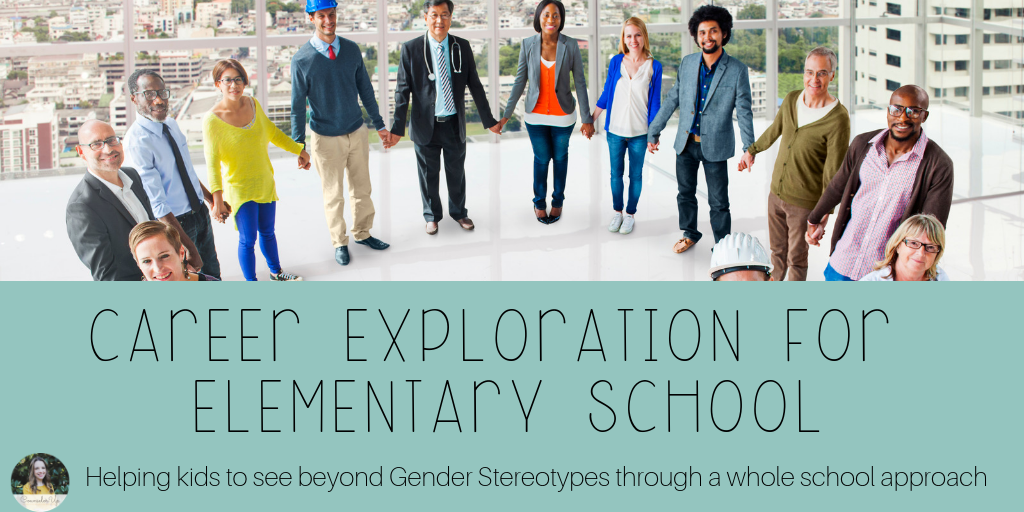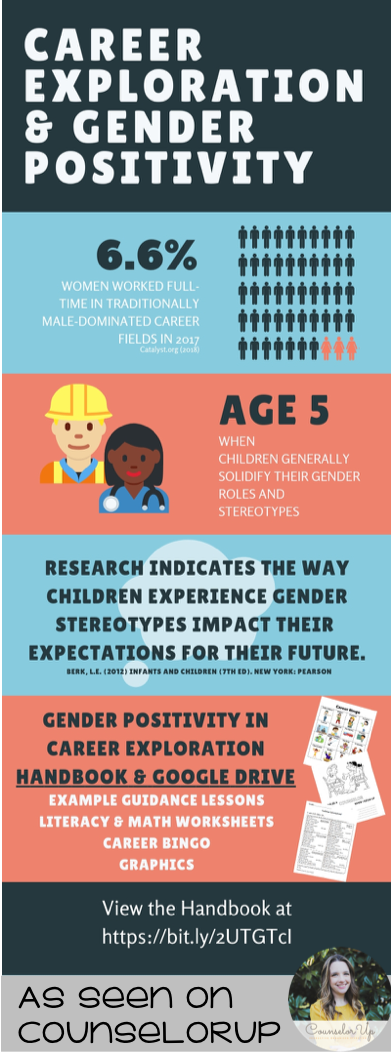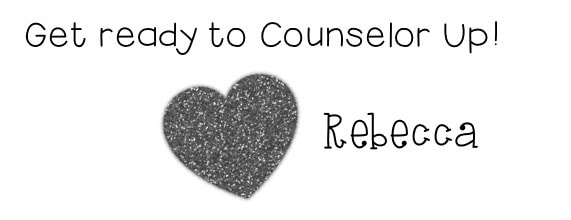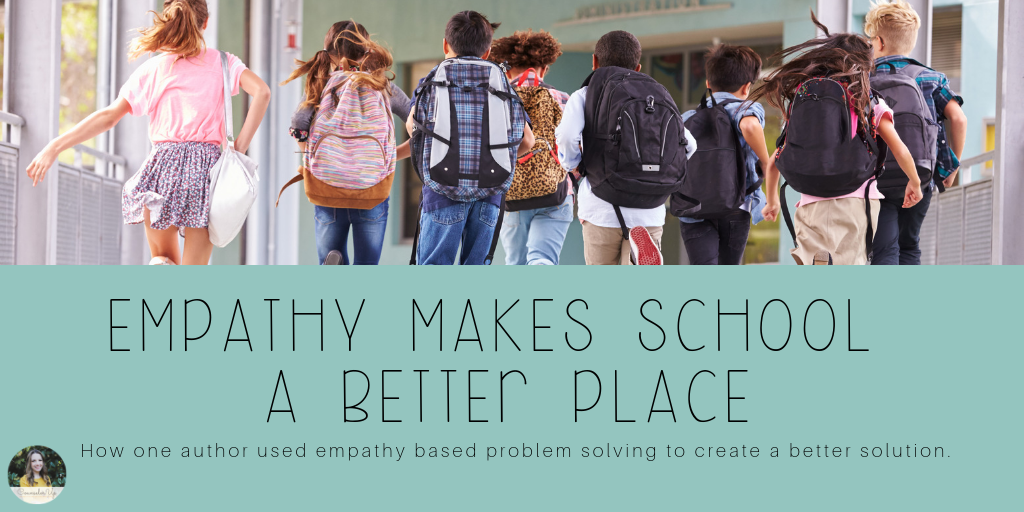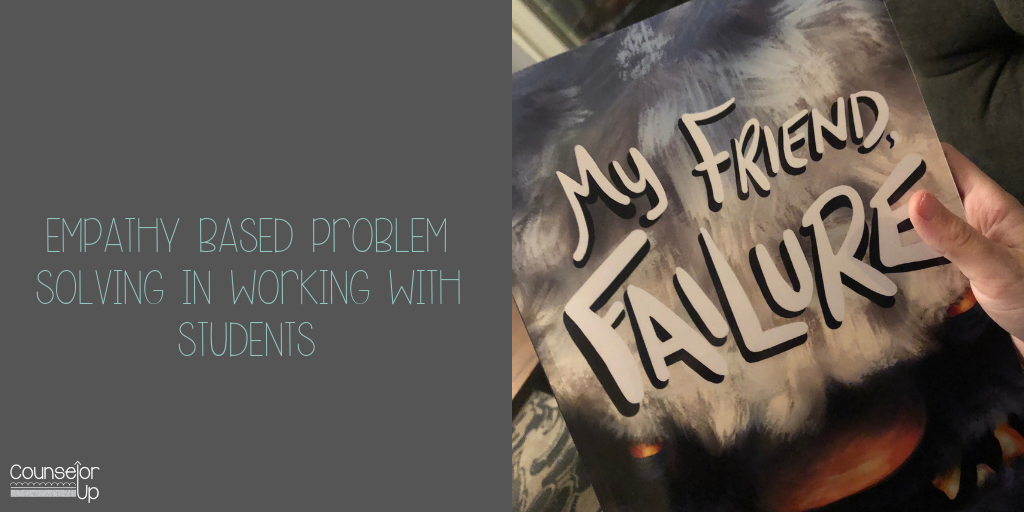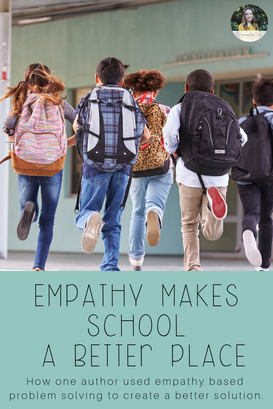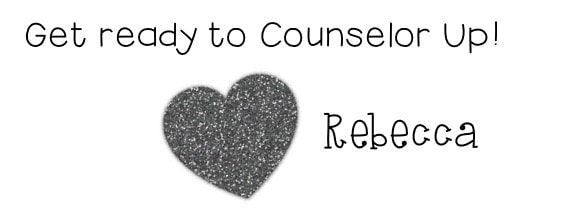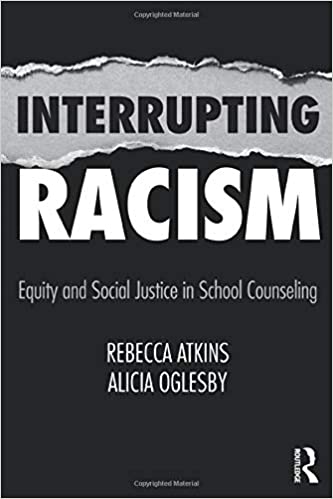We created a career exploration toolkit with a variety of relevant resources for school staff including a lesson plan unit on career development and gender positivity that explores career interests, strengths, understanding, and goal setting. Other resources provided in the drive include an example math and literacy worksheet using gender-neutral or gender non-conforming questions involving career choices, in-class games, research and additional references, and poster graphics. Additionally, the Career Bingo game and coloring sheets include representation for counseling as a profession. By embracing this school-wide initiative, teachers, administrators, and other school staff can play a supportive role in each student’s holistic development.
|
Today I am so happy to welcome Katie, Julia, and Paige to share a series of career exploration lessons for elementary school. These ladies are grad students in my home state and I am thrilled for them to share their work with you. I love seeing our next generation of school counselors ready to make a difference. Amazing work! Hi! We are Katie James, Julia Jefferson, and Paige Alven, school counselors-in-training at the University of North Carolina at Greensboro. As we began our practical experiences at elementary schools this semester, we saw gender stereotypes playing out in the classroom. Many girls wanting to be nurses and ballerinas, and many boys wanting to be police officers and construction workers. Additionally, no students seemed to know about counseling as a profession. When making lesson plans, we searched for resources such as videos, coloring pages, and storybooks that provided examples of gender diversity in career fields. We noticed there was a lack of female representation in career exploration materials for traditionally male-dominated fields and vice-versa. Research has shown that the way in which a child experiences gender-role norms and stereotypes influences how they experience the world, interact with others, and view their future. With children learning about and experiencing gender stereotypes beginning in preschool, we became determined to create resources for elementary school counselors that celebrate both interest and skill no matter the gender. By providing examples that defy traditional gender roles, the counseling lessons can help challenge gender biases and stereotyping and therefore increase academic and career readiness in all fields for all genders. The lessons align with ASCA Mindsets and Behaviors including increasing the sense of belonging in the school environment and using student’s abilities to their fullest to achieve high-quality results and outcomes. Through the use of counseling lessons in conjunction with academic worksheets, career games, and data, the goal of this campaign is to cultivate gender positivity surrounding career development for school-age children and provide resources that feature counseling as a career option. We created a career exploration toolkit with a variety of relevant resources for school staff including a lesson plan unit on career development and gender positivity that explores career interests, strengths, understanding, and goal setting. Other resources provided in the drive include an example math and literacy worksheet using gender-neutral or gender non-conforming questions involving career choices, in-class games, research and additional references, and poster graphics. Additionally, the Career Bingo game and coloring sheets include representation for counseling as a profession. By embracing this school-wide initiative, teachers, administrators, and other school staff can play a supportive role in each student’s holistic development. Thank you Katie, Julia, and Paige for sharing your work! Y'all this is 57 pages of lessons, resources, and materials for you. They have done a great job and I know that others will want to use these great tools. I am so impressed with their work and commitment to school counseling. What do you do for career exploration in your school?
I once wanted a job badly. I daydreamed about this job. I couldn't wait to have this job. I went to the interview super confident, too confident, and didn't come prepared enough. In the end, I didn't get the job and learned that I was their 2nd pick. I learned from that experience and I took that learning into my next interview where I did land the job and eventually ended up in the job that I have today. Failure is its own tool that shapes us into who we are. I am super excited to invite Anthony DeThomas today to share the process of writing his book My Friend, Failure. Anthony works for an innovation consulting firm called Peer Insight, where he practices empathy-based problem solving every day. Prior to his consulting experience, Anthony honed his writing and storytelling skills as a congressional speechwriter. In his free time, Anthony loves pushing his writing and storytelling to their limits with new book concepts. He lives in Washington, D.C. The problems counselors, teachers, and administrators face today are thorny. Solution after solution has been handed down from the top, yet the problems remain. If you can relate to this feeling, maybe it’s time to tap into the school counselor and educator superpower we all share: empathy. Empathy-based problem solving processes, also known as human-centered design or design thinking, are an effective and inclusive way to tackle any problem that has humans at its center. This post will share examples of how empathy-based processes have been used to solve challenges in education, from redesigning the K–12 learning experience for a growing network of schools to creating a new kind of children’s book. It will also provide some tips on how you can start using this approach today. “We spend a lot time designing the bridge, but not enough time thinking about the people who are crossing it.” We’ll start with a story about a Peruvian school system that set out to design the K–12 learning experience for a growing network of schools. The project would leverage empathy to overhaul everything from the curriculum to the teacher training and the school buildings. Their ultimate aim was to figure out how to expand the school system without sacrificing quality and provide international-quality education at an affordable price. What a BIG challenge! Teaming up with world renowned empathizers and designers, the Peruvian school system first learned about other school models around the world that scale well. What’s important to note here is that the team looked at other successful examples for inspiration. You should absolutely do the same as you try to tackle your problem. Another key point is to look outside to see how other smart, empathetic people have solved similar problems. Throughout the project, the designers also collaborated with teachers and students to co-design potential solutions. This meant speaking to teachers and students to learn what wasn’t working well in the current school system and what was. By identifying the teachers’ and students’ most painful problems, the designers could focus on creating solutions for well-defined, meaningful problems, not loose assumptions about the problems. This is another important practice: include the users you want to help in the problem identification and solution creation processes. This could be as simple as having a conversation about what’s bugging them and asking them to give you feedback on your ideas of a solution. This project helped create a school system built from the ground up, based on its users’ needs. For this school system, that looks like: project-based learning in small groups with self-directed time and digital learning tools. Teachers can monitor students’ work online and offer personalized guidance. Parents can view their children’s progress online as well. The buildings were also improved to include different learning environments, like media labs, rooftop study areas, cafes, and community spaces. I used a much smaller scale empathy based process to write My Friend, Failure. This children's book shares the story of a boy who sets out to become the first kid to land on the moon. Stumbling at his first attempt, the boy meets failure face-to-face and becomes its friend. As the boy and his new friend work together on a second try to reach the moon, the boy learns one of the most valuable lessons a child can learn: the power of embracing failure with a growth mindset. What’s unique about this book is the way I worked with elementary school teachers and students to understand their needs when engaging with a children's book and then to use empathy based problem solving to create a more useful book. Here’s what the step-by-step process looked like:
As these two examples illustrate, there are opportunities to apply this type of problem-solving all around us. The advantages counselors have is that they’re equipped with one of the most important inputs of the process - empathy - and they have access to all of the stakeholders likely to be involved (students, parents, teachers, and administrators). By using empathy-based problem-solving processes, you can create and implement solutions to your school’s most pressing problems...starting today! Thanks Anthony! What a great way to create a book. How do y'all use empathy and inquiry to make your practices better? I am currently reading Onward: Cultivating Emotional Resilience in Educators and I see this as a theme there too. Isn't it funny how the universe aligns like that?
|
Rebecca AtkinsWelcome to my blog where I talk about all things school counselor and encourage others to Counselor Up! This website uses marketing and tracking technologies. Opting out of this will opt you out of all cookies, except for those needed to run the website. Note that some products may not work as well without tracking cookies. Opt Out of CookiesInterrupting Racism: Equity and Social Justice in School CounselingLinks may be affiliate links. If you link and purchase, I may receive compensation at no additional cost to you. Thanks for your support of Counselor Up.
Categories
All
Archives
July 2021
|

